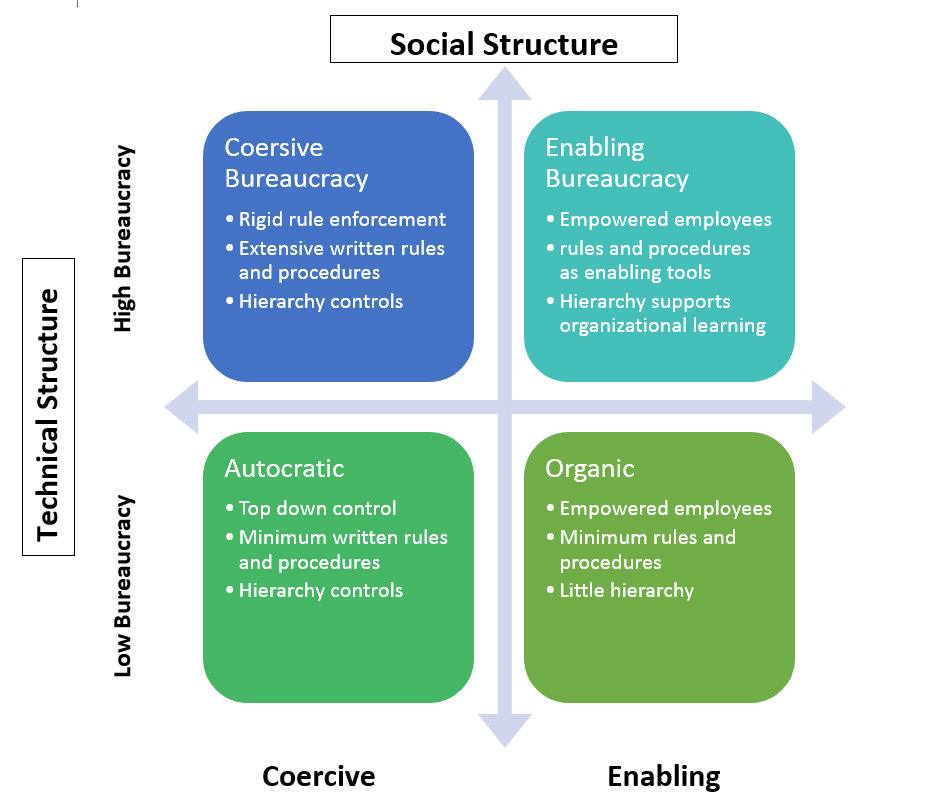As organizations mature, bureaucracies tend to grow to provide support for large, system needs. In long-term care organizations, bureaucracies leans towards a coercive model of employee management, relying on strict rules, policies and procedures and hierarchies. In The Toyota Way, Jeremy Liker diagrams four styles of bureaucracy, modeled after organizational theorist Paul Adler’s research on Toyota:
Organizations, when small and young, trend towards the bottom half of low bureaucracy. With little structure, organizations either rely on the empowerment of individual employees or the direction of strong executive leadership. As organizations evolve, rules and procedures become more complete and complex, and there is a natural drift to the top left quadrant.
What Toyota has done with lean management is create systems that provide support for people, invest deeply in individuals (through training and mentoring) and then promote ongoing learning to enable autonomous decision making. The result is an agile culture of continuous improvement that exists within a large, corporate body.
Contrast this to most long-term care organizations, where line staff typically has little ability to change or improve their own work. Supervisors and managers spend considerable time and resources ensuring compliance with rules and proper procedures. Think of the standardized checklists for paperwork that must travel an almost endless cycle of approvals or the trivial management of side work without regard to outcomes.Think of the effort spent on managing the few employees who struggle with non-compliance and the lack of investment in the rest of the team.
How can organization’s make the shift?
Instead of focusing most resources on the poor performers through a system of performance standards, focus on best practices and share information extensively. Support team learning and sharing of these best practices rather than individual assignment of blame.
Instead of creating forms and processes in closed loop circles (like HR or management meetings), actively engage employees in the process and listen to pain points in completing bureaucratic work. If forms require redundant work or excess approvals, involve the stakeholders in conversation and revise them.
Build systems and polices that support the majority of employees who will do good work, rather than for the small minority of employees who need to be proactively managed out of the organization.
Create a culture where policies and procedures are guidelines of the best current knowledge, rather than strict rules from above. Encourage staff to communicate opportunities for improvement through dialogue and challenge.
For a great related article, check out “How Netflix Reinvented HR” in the Harvard Business Review.


